Sweet Spot: Continental Recording Studio — Long Island City, New York
Albums are alive and well – and there’s a brave studio that’s ready to back up that notion.
The facility that takes the long-playing view? It’s called Continental Recording Studio, and it’s the latest evidence as to why Long Island City may be the true hub of NYC recording today – literally and figuratively.
With the neighborhood’s convenient location providing easy access to artists in Manhattan, Brooklyn, Queens, and Long Island, Continental is ideally situated. But their ongoing success since 2008 is about more than just location, location, location. This is a family business birthed by a band of actual brothers, Mike and Matt Gevaza, who channel their shared energy into sibling chemistry instead of rivalry.
Come inside, and you’ll find a distinctive 1970’s Sound Workshop console, complemented by a serious taste for API. Microphones also make an impact here, with at least one classic choice for every occasion. There’s an absolutely awesome amp collection. Meanwhile, their live space just may be one of NYC’s elite drum rooms.
There’s also technique aplenty to learn from in this Sweet Spot. How and why has Continental refined the art of mixing on the quieter side? How does mastering fit into their professional mix of services? How has Matt’s Master’s degree in music business increased their indie cred? What’s their path to owning content, not just facilitating it? And what’s the secret ingredient that puts their audio expertise and business acumen over the top?
Don’t wait – dive in! This Sweet Spot has a double shot of inspiration.
Facility Name: Continental Recording Studio
Website: http://www.continentalrecording.studio
Date of Birth: 2008
Location: Long Island City, Queens
Neighborhood Advantages:
Matt: When we first opened our doors in Greenpoint, we were hedging our bet on the fact that the music scene in NYC was coalescing around Brooklyn. With CBGB closing down in late 2006 and the gentrification of the LES complete, it was only logical that Brooklyn would emerge as the new hub for NYC-bred creativity.
After building clientele through word of mouth in Brooklyn, moving to Long Island City (LIC) was the next logical step. LIC is more centrally located than Greenpoint and easily accessible through six subway lines. LIC has the authentic NYC-feel that we knew would be a perfect environment for artists looking to capture the hustle, grit, and beauty that is NYC.
Mike: Long Island City is in a central location to Manhattan and Brooklyn. We’re close to the Court Square and Queens Plaza subway stations which are major hubs. You can get to us from the city, Brooklyn or Queens in minutes. We’re also between the LIE and the 59th Street Bridge so people can get to us by car very easily as well.
In addition to the convenience of the location, LIC is currently very up-and-coming, so it’s great watching the neighborhood grow around us.
Facility Focus:
Mike: Our main focus is tracking, mixing and mastering for music production. Although we do plenty of work on singles and on individual parts of the process, we focus a lot on production of full length albums and EPs at Continental.
I’ve always loved working on full albums and a lot of musicians that come to us are looking to record albums. Although some people say the album is a dying art with today’s digital revolution, I still believe in it and I think that it’s still a relevant art form. We’ve directed a great deal of energy towards making Continental a place where great albums could be created.
Sibling Sonics:
Matt: The benefit of running a studio, or any business for that matter, with family is trust. To add to the equation, having played in bands together for the last 16 years, our artistic instincts, strategic vision, and core business and personal values are aligned in a way that allows us to build a cohesive brand with a clear yet powerful message.
Our goal is to provide artists of all scopes and sizes with the same level of care and attention that they would receive if they were the Beatles recording at Abbey Road. Believing in a band and leading them through the process of recording an album encourages them to believe in themselves and allows them to blossom both personally and creatively. The rewards of working this way is that our vision is clear and our results are consistent.
Plus we have a really great time making it happen. We treat the artists we record like family. Probably our biggest inherent challenge is figuring out what we want to order for lunch. I love BBQ and Mike’s more of a pizza guy!
Mission Statement:
Matt: At Continental, our core values center on traditional recording for the modern musician and we’re especially well versed in making full-length albums.
With our large live room, analog/digital hybrid control room, and large selection of vintage amps and equipment, Continental is versatile enough to record everything from live bands and soloists to voice overs and string ensembles. Our setup attracts a lot of rock, indie, punk, and pop bands.
Having a space in LIC also sets us up to attract up-and-coming bands. With musicians and artists being priced out of Manhattan, Brooklyn has emerged as the hub for the NYC creative community. WIth Brooklyn prices quickly becoming more like Manhattan, having a studio in LIC allows us to provide a creative space for Brooklyn-based artists without having the $300+ per square foot cost burden of somewhere like Williamsburg. With these considerations in mind, LIC puts us in a sweet spot to provide artists with a place where they can thrive and feel at home.
Mike: In my early 20’s I had the opportunity to intern at Shelter Island Sound in Manhattan as an apprentice of Steve Addabbo. Steve imparted a great deal of knowledge on me from his years of experience at legendary studios such as the Hit Factory and Sterling Sound. I took in every detail and I apply what Steve taught me every day at Continental.
That’s where the “traditional recording” part of our motto comes from. The goal is to take the traditional concepts that Steve taught me and integrate it with today’s rapidly growing technology.
I mix every project on my console as if it is coming off of a tape machine. We take recalls and start from scratch for every mix. Rather than succumb to the convenience of digital recall of an in-the-box mix approach, I’ve opted to become fast enough to mix in the analog world to make it all work.
Having a hybrid vintage-analog setup is especially attractive to rock bands who are trying to achieve the authentic sound that they hear on their favorite records. We set our standards high and we aim to attain the very best quality that today’s digital technology is capable of achieving while maintaining the vibe of the great records of yesterday and today.
Clients/Credits:
Butchers Blind | A Place In America | Produced by the Gevaza brothers and Butchers Blind. Recorded by Mike and Matt Gevaza
The Phryg | Self-Titled | Recorded by Mike Gevaza. Assistant Engineer: Matt Gevaza
Dark Moon Apache | Civilized by the Genocide | Produced by Mike Gevaza and Dark Moon Apache. Recorded, mixed and mastered by Mike Gevaza. Assistant engineer: Matt Gevaza
Corey Lewin | Simple Love | Recorded and mixed by Phil Duke. Mastered by Mike Gevaza
Family | Future History | Guitars, bass, vocals, and keys tracked at Continental. Additional Recording by Phil Duke.
Legz | Pup | “Well,” “Solvent” and “Winky” Recorded by Phil Duke.
Upcoming releases:
Brett Ferguson Band | Let Go | Produced by Mike Gevaza, Brett Ferguson and Andrew Meyer Recorded and mixed by Mike Gevaza
John Severin and the Quiet 1s | Self Titled | Produced by Mike Gevaza and John Severin. Engineered by Mike and Matt Gevaza
Thrilldriver | Drums, bass, and guitars recorded by Phil Duke
Recorded Here:
Butchers Blind | A Place in America |
The Phryg | Self Titled |
Dark Moon Apache | Civilized By the Genocide |
Skulk, the Hulking “By Hook Or By Crooked Automatic Assault Rifle” |
Uncomfortable Covers – MIL KDU DES “Kokomo” |
Key Personnel:
Mike Gevaza – Co-Founder, Chief Engineer
Matt Gevaza – Co-Founder, Business Development
Phil Duke — Engineer
System Highlights
Mike: At Continental we love collecting gear both hardware and software. The centerpiece of our studio is a Sound Workshop Series 30. It’s a 24 channel analog console from the late ‘70s — a simple inline console designed and built not far from our location. The preamps sound great on many sources which makes them great go-to pre’s especially in larger sessions such as live band tracking.
The console EQ’s are 3-band sweepable versions of the API 550A’s. They even have stacked pots like the 550s. We have custom 4-band EQs on channels 23 and 24 that resemble the API 550B’s. They sound incredibly musical and make it very easy to find the exact right frequency to boost or cut for any given source.
We have API transformers installed on the mix bus and we use an API 2500 as our mix bus compressor. This has proven to be a winning combination when it comes to mixing and mastering. As you can tell, we really dig API at Continental.
We record to Pro Tools using MOTU, RME and Apogee converters. The MOTU 2408 system provides a massive amount of expandability and professional quality. We mix to an Apogee Rosetta 2 channel AD converter. This has remained one of my favorite converters ever since I first got involved with DAW recording.
Our mic collection is constantly growing and we’ve amassed quite a few over the years. My favorite mic for vocal sessions is the Peluso 2247. It is a multi-pattern large diaphragm tube mic styled after the Neumann U47. It has incredible clarity and sounds especially good on loud or dynamic vocalists.
I recently got a pair of AKG 451s that sound amazing on acoustic guitar, piano, strings, and as drum overheads. Our secret weapons for recording guitar amps are vintage Shure Unidyne IIIs. I prefer them to modern SM57’s on guitar amps, although I do prefer 57s on the snare drum. As for ribbon mics, we have a pair of Cascade Fathead IIs as well as a pair of Beyerdynamic m160s which see a lot of use on various instruments.
We have a nice selection of preamps and channels strips and each has their own individual characteristics and uses. My go-to pre’s are usually the Focusrite ISA428’s. I am a big Focusrite fan and these are about as close as we can get to a collection of original Rupert Neve designed ISA110 preamps. I love simplicity in my signal path and the ISA428 pre’s are about as simple as they come. We also have an ADK AP-2 stereo mic pre as well as an Avalon 737 and a Summit 2BA-221. Summit has been one of my favorites since I started collecting gear.
I use the Empirical Labs EL8 Distressor daily: It’s one of the most versatile compressors out there. We have a custom 1176 clone with a wooden face that Phil got from a studio down in Asbury Park. It sounds awesome and is a frequent piece of the vocal chain during tracking as well as mixing. I also have a pair of DBX 161s that I had modded by Jim Williams at Audio Upgrades. They are my favorite compressors to use on bass.
Besides our collection of analog gear, we also have an affinity for software plugins. I particularly like Lexicon’s PCM native reverbs which I use on every mix. I also use the Soundtoys Echoboy for most of my delays. We have a bunch of Waves plugins too, including the JJP Pultec EQs and Fairchild 660 plugins. I use those often as well as the Waves CLA-2A and CLA-3A for in-the-box compression.
NOT so Loud:
Mike: I mix on NS-10s and treat them as my standard small system. I will check the mix on Mackie HR824s which I use as my large system. I generally like to mix around 85dB. In our room I will even go a few decibels quieter as our room is a bit small.
Generally I like to mix on the quieter side because having the monitoring system too loud can exaggerate the high and low end that you’re hearing and your resulting mix will sound dull. On the other hand if you mix too quiet, your mixes will end up having too much high end or low end. This is a phenomenon that is defined by the Fletcher-Munson curves. Monitoring at the proper level is very important to getting the perfect mix.
In addition to producing an accurate mix, a quieter mix is also easier on the ears. I find that I can mix for longer periods of time if I keep the mix quieter. If you monitor your mixes too loud for too long you will encounter ear fatigue earlier and you will be risking damage to the most important tool that you have as an engineer.
Master Control:
Mike: Comparative listening helps a lot with achieving good mastering results. I listen to a lot of modern and classic recordings and analyze the sound that they’re achieving. When a client needs mastering I’ll meet with them and listen to their mixes and decide on some references that sonically matches their style.
I use the tools that I have and the techniques that I’ve learned to get their record to be sonically competitive with commercial releases while maintaining the originality and vibe of their music. From there it comes down to making the record work together and flow nicely. Understanding the art and a science of mastering is paramount and there is no substitute for years of practical experience.
Other Distinguishing Characteristics:
Mike: Our studio is in an old factory building. The live room has some of the original factory walls in there and it’s got a great live sound to it. The live room also has a brick wall which gives it a really nice character. Everything sounds great in there: Acoustic guitars sparkle and drums sound huge.
We left it relatively live so you can get a great big drum sound or a nice vibrant sound for a string section. However, if you need to make it tighter and more intimate for vocals, we have heavy duty movable gobos that we set up with some absorption that can tighten up the room as necessary.
We also have a great amp collection. We have some awesome vintage and modern amps. I’m a big Fender guy and I use my 76 Fender Pro Reverb on a lot of tracks. It has a very distinct tone that sits really well in many tunes. You can get sparkling clean tones, heavy overdrive, and everything in between. We have some really cool Marshall and Vox amps making for a diverse palette of sounds.
Our Own Content:
Matt: Within the last year or so, our interests at Continental have branched out into generating our own content. This effort was launched in earnest last summer with the start of our affiliate record label and publishing company Electric Giant Productions.
The goal of our label is artist development. Over the years we noticed a trend: When bands would finish recording with us they’d either put up the recording online for free and simply share it on social media or ask the question, “What do we do next?” After hearing that question enough times, we began to ask ourselves the same question.
I endeavored on a journey into academia and came out two years later with my Master’s degree in Music Business from NYU. With this knowledge, we felt confident we could answer that question and lead bands in the right direction. Professionally this has helped us not only develop the artists we work with, but has given us an additional creative outlet to express our passion for music and for the artists we work with.
Our “Uncomfortable Covers” campaign speaks to the ethos of our studio and our new label: to experiment, push past comfort zones, and to have fun in the process. Through our various endeavors we maintain steadfast to our values, and having two people with a shared vision and high level of trust really lends itself well to that journey.
The building is on fire, you only have time to grab ONE thing to save, what is it?
Mike & Matt: Bill!!! We would grab our loving, reliable, 53 year old Ampeg B-18 Portaflex from 1963 engraved with the name-plate “Bill.” Although we love every piece of gear that we’ve collected over the past 15 years, Bill is a piece of gear with soul. He has personality that could never be replaced.
Rave Reviews:
Mike: People tell us that they really love how comfortable they feel at our studio and how much attention to detail and care we give to each session. We’ve been told by multiple clients that they feel more comfortable and that they’re getting better quality work at our studio than at some of the biggest (and most expensive) in NYC.
Clients love that we care about our work and about them. We often hear that our attentiveness is what makes us their choice for recording.
Most Memorable Session Ever:
Matt: The most memorable session ever was recording INDYNS self-titled EP back at our original Greenpoint location in the summer of 2009.
In our early 20’s at the time, we were pulling frequent all-nighters and diving deep into the creative process. We were really honing our techniques, perfecting the art of tracking a full-band in one live room with little to no bleed, and experimenting with sounds as much as possible.
INDYNS were some wild dudes, true rock stars making MGMT-style music before it was fashionable. One late night, well past midnight, we were trying to get the right key sound and we were playing around with a bunch of instruments. Eventually we had the idea to track a toy piano, probably about 2 feet long by 1 foot high, and decided to track it for their tune “Dance So Close.” The sound it produced was the perfect addition to the song; it really made the tune and gave it a creepy, dancy, vampire-esque banger.
The reason it was such a memorable session was because of the pure experimentation, the true joy we found in trying out a bunch of different sounds and really nailing it, and the way we really dug deep to find what was right for the track. That experience is something that we’ve always carried with us and that still shapes our process and technique over seven years later. Experimentation, persistence, and unlocking creativity are all essential elements to making a great recording.
Session You’d Like to Forget:
Mike: I can honestly say I’ve never had a session that I’d like to forget. We’ve always thrived in even the highest pressure sessions and enjoyed every one that we’ve done.
However, during one session a while back, I was working with a producer and we were recording a string quartet. After the quartet left for the day, we were exporting the audio files from Pro Tools so that the producer could work on them in Logic. During the export, Pro Tools completely froze up. I often hit Command-S during sessions as a reflex in order to insure that our work is being saved as we go. However, in this particular moment I couldn’t remember when the last time I saved the session was. In addition, Pro Tools’ automatic backup function had been disabled for one reason or another.
That may have been one of the scariest moments that I had as an engineer and I definitely wouldn’t want to experience that again. Luckily, the last time I had saved was five minutes before the crash so we didn’t lose a single file.
Matt: Running a recording studio is really a beautiful experience. Sure, there are hardships and the occasional unreasonable client, but at the end of the day we’ve seen firsthand what a unifying force music is. We’ve worked with, literally, artists from every genre of music and from every socio-economic background. Music breaks down all barriers and truly is a universal language. The experiences we’ve had and continue to have are special and we don’t take them for granted.
Dream Session:
John Bonham. In a stairwell. With 3 mics.
— Mike & Matt Gevaza, Continental Recording Studio
Please note: When you buy products through links on this page, we may earn an affiliate commission.







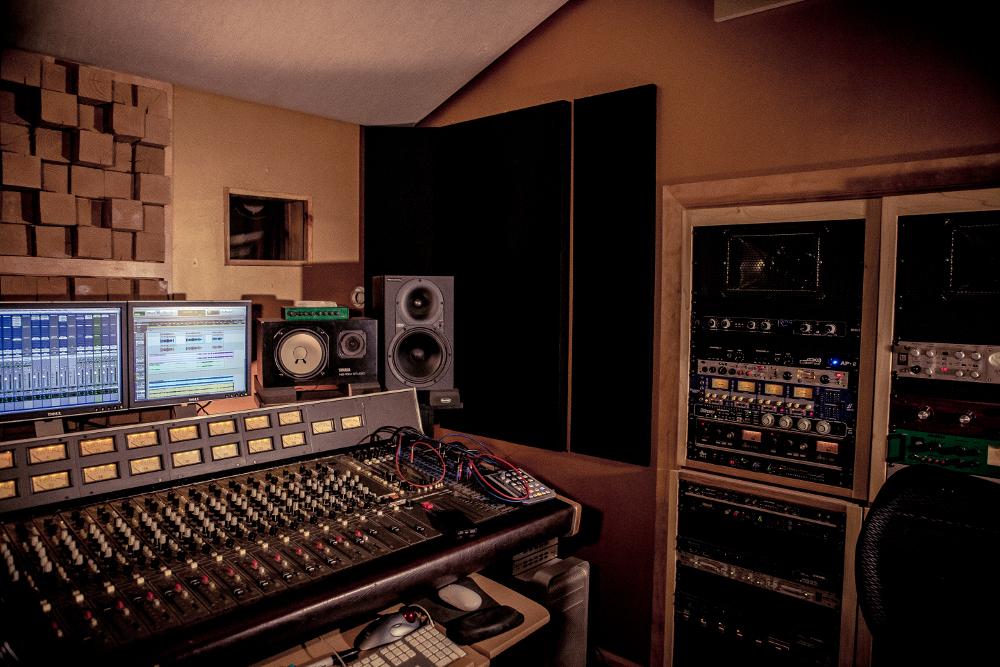
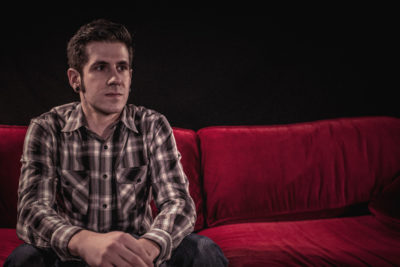
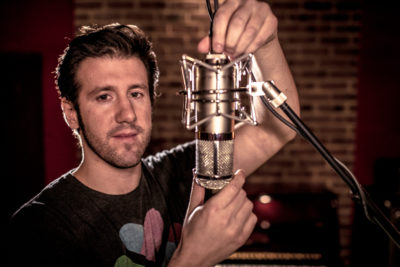
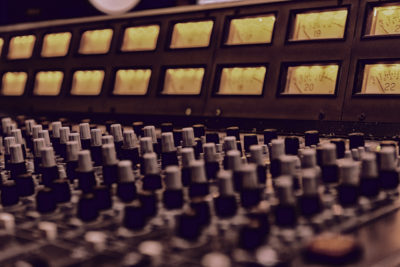
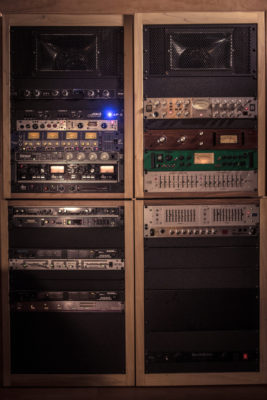
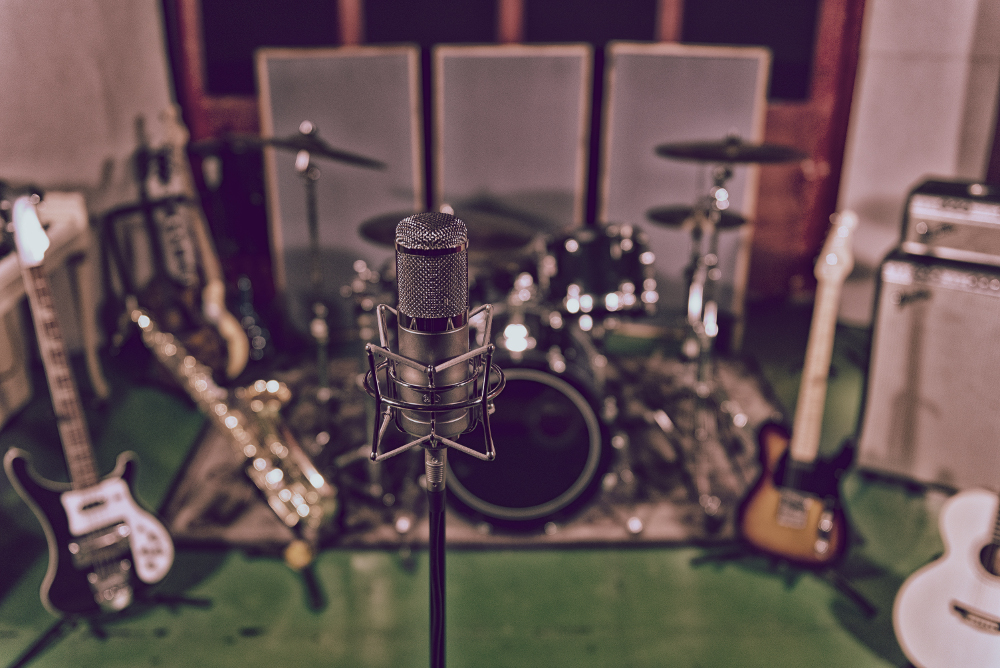
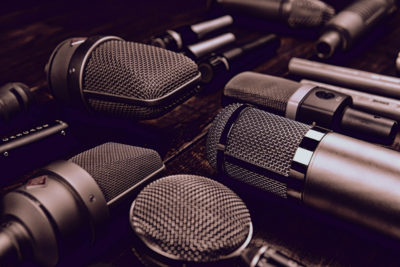
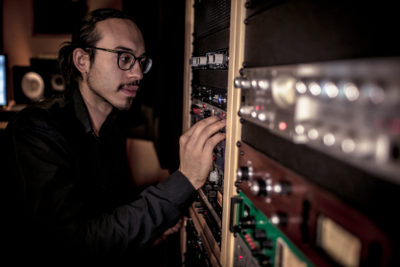

Emily Cavanagh
August 9, 2016 at 9:50 pm (8 years ago)Congrats guys! Love this studio. So happy to be working with you:)